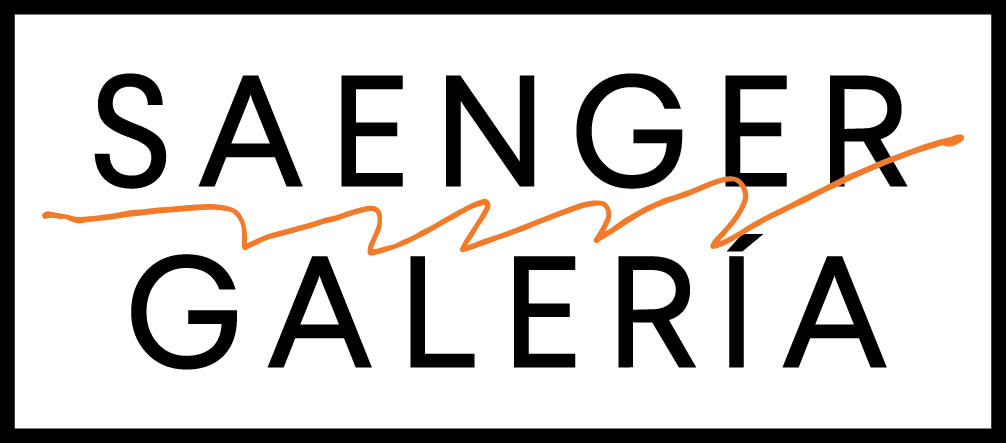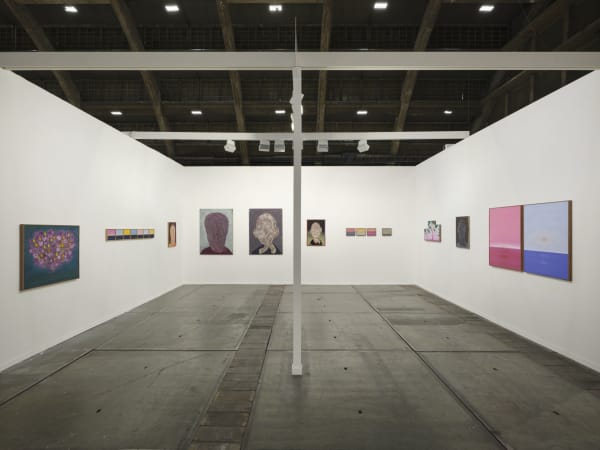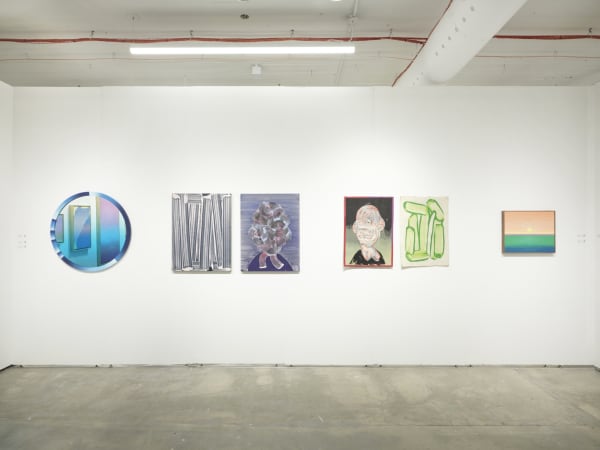Popocatéptl (Love is in the Air) by Robert Janitz: at Casa Siza
DIOTIMA
In works of art, we encounter technical characteristics, materials and executions as elements that exist, progress, disappear or linger on. Evolution as a principal and ineffable characteristic of art.
Robert Janitz’s work reminds us of the importance of the patience and silence of contemplation, inviting us to enjoy the subconscious effect of the details of the pieces and our relationship to them, refusing immediacy.
The interdependence of the patterns gives us an overview, anticipating the discovery of different attributes such as the use of baking flour and wax as mediums. The rediscovery of the marks, the recognition of the lines and textures, the interweaving of the colors. The movement of the hand in the brushstrokes and the blurring effect grant us a different perspective of the layers. The transformation of texture as a vehicle for the imagination.
The work’s “wounds” are reminiscences of beauty in the pieces created by Robert Janitz. What characterizes the artistic object is the process of freedom; the intention to not urge, force or instrumentalize the execution of technique, to not impose anything upon the piece. The vehemence of the work, the non-thought of execution allowing itself to be carried away by impulse.
The obsession with a calculable and controllable process is liberated through natural movements and characteristics, the relationship with the organic, the irregular and the constancy of change, creating a unique perception and personality depending on where the work is viewed from.
As the artist mentions, his work tackles the ease with which the mind can imbue even the simplest painted marks with a representational function; the brushstrokes maintain their autonomy and suggest the plume of a volcano, a strange head or pure mark-making. Janitz’s self-reflective impasto turns into an anthropomorphic affirmation, almost by chance.
Popocatépetl, the iconic volcano personified, and its paramour Iztaccíhuatl, both majestically visible from Mexico City on clear days, tell a love story that is a living part of the Mexican psyche.
Janitz’s work contemplates what is in front of his eyes: simultaneously an inanimate piece of nature, and a meaningful local legend; an anchor of identity.
Harmony between rationality and dream, from the physical to the intangible, the mental. The introspection and progressive unveiling of the work grants us a personal satisfaction, a specific feeling, an evocation in our memories. Beauty presupposes a game, an invitation to not miss out on the fun by cheating, the freedom of an active and conscious process, enabling us to see, to enjoy the experience of an event.
Beauty is always binding.
— Eduardo Luque





